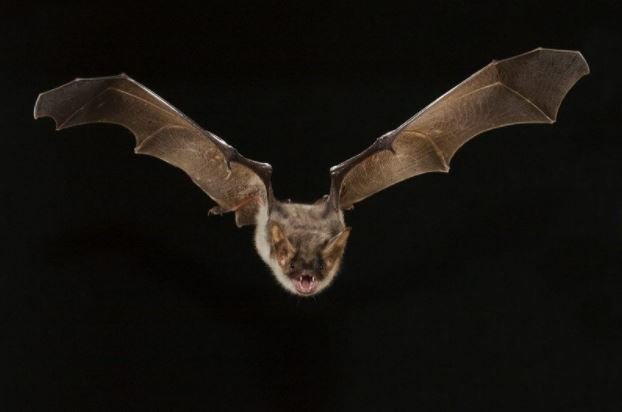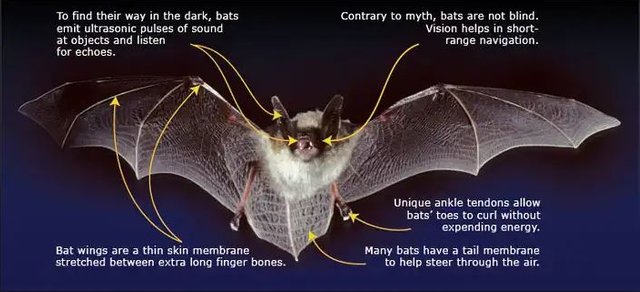Can We Afford To Lose Bats, Given Their Importance?
Not so many people actually know that the small, mouse-like, winged, nocturnal animal that flies at night has its benefits. These animals are called “bats”.

Some perception of these bat creatures are usually related to horror, blood-sucking fiends, graveyards, and even the very legendary and famous Count from Transylvania.
However, studies have shown that bats are no such thing, as depicted in horror movies - they aren’t intent on infecting you with lethal diseases neither are they nefarious in nature or vampires?

Bats are instead, harmless and intelligent mammals that have not been adequately recognized for their importance in our ecosystem and economies.
Sadly, a new threat from a fungus, and the effects of wind from renewable energy, is quickly threatening the continued existence of the long-lived bats, and their hugely undeniable benefits.
Feeding in Bats
Despite the inhibitions towards bats regarding their ‘vampire-like’ tendencies, the fact remains that it is just 3 of the over 1200 species of known bats that actually consume blood. These blood-consuming species are found in Latin America.
Majority of bats feed on fruits, insects and nectar. In just one year, about 1 million bats consume 694 tons of insects. 2011, a ‘bat specialist’ at the Boston University, Thomas Kunz and his co-authors, highlighted the various benefits supplied by bats.
Benefits of Bats
a.) Insect-eating bats – help consume pests of crops which cause diseases to man and animals.
b.) In tropical regions – bats that feed on fruits and nectar help disperse seeds and pollen grains. Multi-million dollar companies have “bats” to thank for the pollination of plants used to produce tequila and mescal.
c.) Bat excrement (Guano) – is mined for fertilizer which supplies nutrients.
d.) Tourist attraction – about 1.5 million Brazilian bats, generate over $3 million dollars in income from the city of Austin, Texas.
Decimation of bats
Hunting and bush meat trade has significantly diminished the populace of fruit eating bats. Other factors that has led to the bat apocalypse, are the previously undiscovered white-nose syndrome and renewable wind energy development which has led to countless mortalities of bats.
* White-nose syndrome
When the white-nose syndrome (Pseudogymnoascus destructans) infects bats, they develop white growth around their wings and muzzles. The white-nose syndrome not only destroys the wing membrane and tissues of bats, it goes on to prevent the bats from hibernating properly, leading to starvation, loss of winter fat reserves, etc. In North America, the white-nose syndrome has killed over 5.7 million bats. Also, infected colonies have experienced mortality in excess of 90 percent. Many species of bats could become extinct in 20 years, if the spread of the pathogen is not stopped.
A biologist, Dan Taylor, with the Bat Conservation International said;
“So far we’ve not been able to slow its spread. However, we now know a lot more about the life cycle of the fungus, and there have been several promising studies indicating that certain naturally-occurring bacteria found on the skin of bats and in soil can inhibit its growth.”
* Wind energy developments
Wind energy and pressure have affected bat species adversely between 2000 and 2011.
Collisions from wind turbines and barotrauma involving bats has influenced bat mortality greatly.Also, internal injuries from rapid changes in pressure close to the blades, have led to the death of as many as 1.3 million bats.
Conclusion
Bat Conservation International in the last two decades has worked to take steps in reducing the number of bats killed via wind farms. Reducing the speed at which the blades of wind turbine turns has helped reduce mortality by about 50 percent.
Development of Wind turbines capable of producing ultrasonic sounds waves would also help reduce fatalities by scaring the bats off the wind turbines, through the sound sources.
In the case of the white-nose syndrome, expectations would be high in the coming years; as scientists try to use their knowledge of the life-cycle of the fungus, and the naturally-occurring bacteria in the soil or on the skin surface of bats, to perfect procedures that would be implemented to save the rapidly disappearing bat species.
Reference:
- Ecosystem services provided by bats
- Bat
- White nose syndrome
- Bat Conservation International
- cdc.go
- Disease Information - WNS
Thank you for your time and for reading my post.
If you found this post interesting, then kindly UPVOTE, RESTEEM and FOLLOW @rickie, for more quality posts.
You Can Check Out My Other Posts Below:
- New Blood Test Can Predict Early Signs of Alzheimer's Disease
- What is Deep Brain Stimulation (DBS) and How does it Work?
- Tree-Planting Drones – A Booming Business to Restore and Revive Earth
- Cranberry and Avocado Seed Husks Are Medically More Potent Than Previously Thought
- Apart From Humans, Pollution Affects Plants Extremely Too
- Treatment Of Ponds And Water Using Aquatic Plants


Wow. That's a very informative post . Sadly I didn't learn anything about bats in high school biology. So this posts has enlightened me on that animal. There's a Ghanaian myth that says that there was once upon a time when the bat played with both the birds and the mammals. But the bat was a very bad animal in the sense that when there's a fight between the birds and the mammals, bat would associate itself with the winning team. So if birds are winning, bat would go to mix with them and claim to be part of them and vice versa. This bad attitude became noticed by both parties and they both deserted it. It later became alone and due to shame, it could only come out in the night.
Lolz.... @gadol quite a funny Ghanaian myth. But there is a very great moral to be taken from the story though. Thanks for sharing, and i'm glad you gained something from this post.
Welcome.
This will help our health! Thank you. Can I resteem it?
Thank you for reading @htuan
This post has received gratitude of 10.10 % from @appreciator thanks to: @rickie.